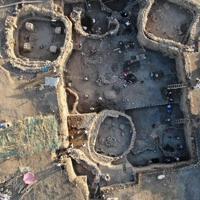Kocaeli

Kocaeli University’s Archeeometry Research Group Has Discovered That the Copper Smelting and Casting Process in Anatolia Dates Back 3,000 Years Earlier Than Prevously Known, Originating Around 8,000 BCE at Diyarbakir, Rather Than The Widly Accepted 5,000 BCE in the Southern Province of Mersin.
class = “cf”>
This Breakthrough, LED by Professor Ayşe Tuba Ökse of Kocaeli University and Diyarbakır Museum Directorate, Seds New Light on Early Metallurgical Practices During the Neolithic Period in the Upper Tigris Valley, Southeast Anatolia.
The Research, Published in prestigious journals like Science and Journal of Archaeological Science Associated with Small Decorative items or pigments.
Through interdisciplinary collaboration, The Group Conducted Chemical and Physical Analysis of Materials, Showing That Early Metallurgical Processes Involved Melting and Shaping Copper in High-Temperature Kilns.
These Findings Challenge Prior Assumptions, Revealing that these communities were not only.
class = “cf”>
One Partiorsly Striking Discovery is the Copper Used in Gre Fılla.
This implications an adancies, the regional trade routes and Natural Resources, Suggesting that these neolithic peoples had a professional environment, Possessing High.
Dr. Ayşin Konak Emphasized That Gre Fılla, A Site Without Pottery, Served AS A Long-Term Settlement, Indicating the Commour’s Deep Engagement These findings provide complling house that the Development of Early Metallurgy Was Part of a Broader Network of Interreigional Exchanges and Technological Innovations During the Neolithic Era.





